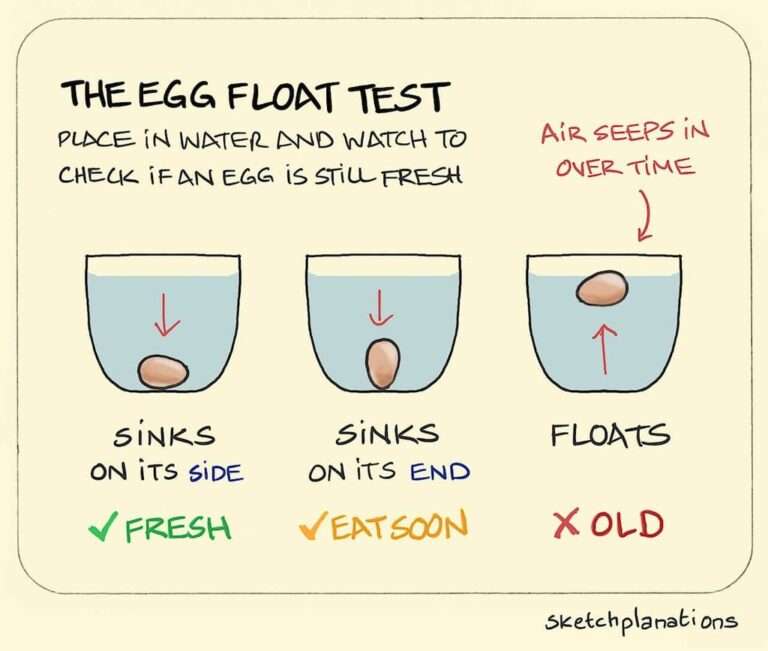The Fishbone Technique: Discovering Cause and Effect in Stories
Overview
What is the Fishbone Technique?
The Fishbone Technique, also known as the Ishikawa diagram or cause-and-effect diagram, is a visual tool used to identify the root causes of a problem or an effect. It provides a structured approach to problem-solving by organizing potential causes into major categories, such as people, process, equipment, materials, and environment. By visually mapping out the potential causes and their relationships, the Fishbone Technique helps teams gain a deeper understanding of the problem and facilitates effective brainstorming for potential solutions. This technique is widely used in various industries to improve problem-solving, enhance decision-making, and drive continuous improvement.
Why is the Fishbone Technique important?
The Fishbone Technique, also known as Ishikawa diagrams, is an essential tool for uncovering the root causes of problems. By visually mapping out the various factors that contribute to a problem, this technique helps identify the underlying issues that may not be immediately apparent. It allows individuals and teams to analyze complex situations and understand the cause-and-effect relationships between different elements. This understanding is crucial for effective problem-solving and decision-making. The Fishbone Technique provides a structured approach to problem analysis, enabling organizations to address issues at their core rather than simply treating the symptoms. It helps prevent recurring problems by addressing their root causes, leading to long-term solutions. By implementing the Fishbone Technique, businesses can improve their problem-solving capabilities, enhance decision-making processes, and ultimately drive continuous improvement.
How does the Fishbone Technique work?
The Fishbone Technique, also known as the Ishikawa diagram or cause and effect diagram, is a visual tool used to identify and analyze the root causes of a problem or an effect. It is a structured approach that helps to uncover the underlying factors that contribute to a particular outcome. The technique gets its name from its resemblance to a fishbone, with the effect or problem being the head of the fish and the potential causes branching out like the bones. By organizing potential causes into categories such as people, process, equipment, environment, and management, the Fishbone Technique provides a systematic way to explore all possible causes and understand their relationships. This comprehensive analysis allows teams to gain a deeper understanding of the problem and develop effective solutions. The Fishbone Technique is widely used in various industries, including manufacturing, healthcare, and software development, to improve problem-solving, enhance decision-making, and drive continuous improvement. Implementing the Fishbone Technique involves defining the problem, identifying major categories, and brainstorming potential causes within each category. By following these steps, teams can uncover the root causes of a problem and take targeted actions to address them.
Benefits of the Fishbone Technique
Identifying root causes
Identifying root causes is a crucial step in problem-solving and decision-making. The Fishbone Technique provides a structured approach to uncovering the underlying factors that contribute to a problem or issue. By visually mapping out the potential causes in different categories, such as people, processes, and equipment, you can gain a comprehensive understanding of the root causes. This enables you to address the core issues rather than just treating the symptoms. Root cause analysis is essential for developing effective solutions and preventing problems from recurring. By using the Fishbone Technique, you can streamline your problem-solving process and make more informed decisions. Take advantage of this powerful tool to uncover the true causes behind your challenges and drive meaningful change in your organization.
To learn more about problem-solving techniques and how to implement them effectively, visit Unifire.
Improving problem-solving
The Fishbone Technique is a powerful tool for improving problem-solving. By identifying the root causes of a problem, teams can develop targeted solutions that address the underlying issues. This technique encourages a systematic approach to problem-solving, ensuring that all potential causes are considered and evaluated. It helps teams move beyond surface-level solutions and delve deeper into the factors that contribute to the problem. By using the Fishbone Technique, organizations can enhance their problem-solving capabilities and make more informed decisions. To learn more about how the Fishbone Technique can benefit your team, visit Unifire for practical tips and guidance.
Enhancing decision-making
The Fishbone Technique is a powerful tool for enhancing decision-making. By using this technique, you can identify the root causes of a problem and gain a deeper understanding of the underlying issues. This enables you to make more informed decisions and take appropriate actions to address the problem effectively. The Fishbone Technique helps you to visualize the cause-and-effect relationships and prioritize the most significant factors contributing to the problem. By focusing on the root causes, you can avoid treating only the symptoms and achieve long-term solutions. This technique is particularly useful in complex situations where multiple factors are involved. By applying the Fishbone Technique, you can improve your decision-making process and ensure that your actions are based on a thorough analysis of the problem. If you want to enhance your decision-making skills and improve problem-solving in your organization, consider implementing the Fishbone Technique.
Steps to Implement the Fishbone Technique
Define the problem
In order to effectively use the Fishbone Technique, it is crucial to clearly define the problem at hand. This involves identifying the specific issue or challenge that needs to be addressed. By clearly defining the problem, you can focus your efforts on finding the root causes and potential solutions. The Fishbone Technique provides a structured approach to problem-solving, allowing you to identify the relationships and interactions between different factors that contribute to the problem. By understanding these relationships, you can uncover the underlying causes and develop effective strategies to address them. This technique is particularly valuable in complex situations where multiple factors are involved. By using the Fishbone Technique to define the problem, you can gain a deeper understanding of the issue and make more informed decisions.
Identify major categories
Once the problem has been defined, the next step in implementing the Fishbone Technique is to identify the major categories. These categories serve as the skeleton of a fish, providing a framework for organizing potential causes. The major categories are typically represented as branches on the fishbone diagram, with each branch representing a different aspect or area that could contribute to the problem. By identifying these categories, you can ensure that all possible causes are considered and that the analysis is comprehensive. Some common categories include people, processes, materials, equipment, and environment. Taking the time to thoroughly identify and define these categories will set the stage for a successful brainstorming session and ultimately lead to a more accurate and effective analysis of the problem.
Brainstorm potential causes
After defining the problem and identifying major categories, it’s time to brainstorm potential causes. This step involves gathering a diverse group of individuals with different perspectives and expertise to generate a comprehensive list of possible causes. Encourage everyone to think creatively and freely, without judgment or criticism. Use techniques like mind mapping or the 5 Whys to explore the underlying factors contributing to the problem. Remember to prioritize depth over high-level explanations, as this will lead to a more accurate understanding of the root causes. By thoroughly examining all possible causes, you can uncover hidden connections and gain valuable insights into the problem at hand. Causes are the building blocks of the fishbone diagram, and a thorough brainstorming session will ensure that all potential causes are considered.
Conclusion
Summary of the Fishbone Technique
The Fishbone Technique is a powerful tool for identifying the root causes of a problem. By visually mapping out the various factors that contribute to a problem, it helps teams gain a deeper understanding of the underlying issues. This technique is particularly useful in problem-solving and decision-making processes, as it allows for a systematic approach to analyzing cause and effect relationships. By identifying potential causes through brainstorming, teams can uncover hidden factors that may have been overlooked. The Fishbone Technique has applications in various industries, including manufacturing, healthcare, and software development. To successfully implement this technique, it is important to define the problem clearly, identify major categories, and encourage open and creative brainstorming sessions. By using the Fishbone Technique, teams can improve their problem-solving skills, enhance decision-making processes, and ultimately drive positive change within their organizations.
Applications in various industries
The Fishbone Technique has found applications in various industries, helping organizations identify the root causes of problems and make informed decisions. In healthcare, it has been used to analyze patient safety incidents and improve the quality of care. In manufacturing, it has been utilized to identify bottlenecks in production processes and optimize efficiency. In software development, it has been employed to uncover the underlying causes of software bugs and enhance the overall reliability of systems. The versatility of the Fishbone Technique makes it a valuable tool for problem-solving and decision-making in a wide range of industries.
Tips for successful implementation
After understanding the steps to implement the Fishbone Technique, it is important to keep in mind some tips for successful implementation. First, ensure that you have a clear definition of the problem you are trying to solve. Second, make sure to involve a diverse group of stakeholders in the process to get different perspectives and insights. Third, use a visual representation of the fishbone diagram to make it easier to identify and analyze the potential causes. Fourth, encourage open and creative brainstorming sessions to generate a wide range of potential causes. Fifth, prioritize the identified causes based on their impact and likelihood. Sixth, regularly review and update the fishbone diagram as new information or insights emerge. By following these tips, you can maximize the effectiveness of the Fishbone Technique and uncover valuable insights to address complex problems.
To learn more about problem-solving techniques and improve your decision-making skills, check out Unifire’s comprehensive guide on problem-solving and decision-making strategies. Visit Unifire today!
In conclusion, Unifire is the ultimate tool for extracting summaries, keywords, and titles from your podcast and repurposing your content. With Unifire, you can save time and effort by automating the process of generating valuable content. Whether you’re a content creator, marketer, or podcaster, Unifire can help you optimize your content strategy and reach a wider audience. Don’t miss out on the opportunity to enhance your content creation workflow. Visit Unifire today and start maximizing the potential of your podcast content!









 العربية
العربية Čeština
Čeština Dansk
Dansk Nederlands
Nederlands English
English Suomi
Suomi Français
Français Deutsch
Deutsch Italiano
Italiano 日本語
日本語 한국어
한국어 Norsk bokmål
Norsk bokmål Polski
Polski Português
Português Русский
Русский Español
Español Svenska
Svenska